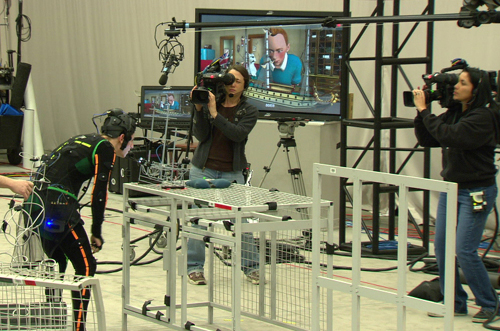At the upcoming conference of the Society for Cinema and Media Studies (March 6-10, 2013 in Chicago), I will be participating in a panel on “post-cinematic affect” with Steven Shaviro (who, literally, wrote the book on the topic), Therese Grisham (who organized a great roundtable discussion on the topic in La Furia Umana, which I was also proud to be a part of — and which can alternatively be found here if La Furia Umana is down), and Julia Leyda (who also participated in the roundtable and will serve as respondent on our SCMS panel).
Here is a description of our panel, which is scheduled for Thursday, March 7, from 3:00 – 4:45 pm (Session H):
Post-Cinematic Affect: Theorizing Digital Movies Now
If cinema and television, as the dominant media in the twentieth century, shaped and reflected our cultural sensibilities, how do new digital media in the twenty-first century help to shape and reflect new forms of sensibility? Continuing from roundtable discussions on “post-cinematic affect” in the online film journal La Furia Umana, this panel explores the emergence of a new “structure of feeling” (Raymond Williams) or “episteme” (Foucault) in post-millennial film, one that is evident in new formal strategies, radically changed conditions of viewing, and new ways in which films address their spectators. Contemporary films, from blockbusters to independents and the auteurist avant-garde, use digital cameras and editing technologies, incorporating the aesthetics of gaming, webcams, and smartphones, to name a few, as well as Internet media. For this reason alone, we argue, the aesthetic boundaries between art-house film and blockbuster have become blurred. Moreover, the aesthetic elements of contemporary film do not just simulate the environments created by digital technologies and media, but break more radically with the geometry and logic of films in the twentieth century. In this way, they reflect or transmit the effects, not only of digitization, but also of economic globalization and the financialization of more and more human activities. But these changes have only begun to be theorized. In this panel, we continue the work of theorizing a critical aesthetics of film culture today. The papers take as their critical starting-points David Bordwell on “intensified continuity,” Matthias Stork on “chaos cinema,” and Steven Shaviro on post-cinematic affect and “post-continuity.”
The papers explore key critical issues for analyzing post-cinematic affect, in terms of the ambivalent aesthetics of recent films exhibiting a longing for cinema as the lost object of desire (Therese Grisham on Martin Scorsese’s Hugo), post-continuity stylistics (Steven Shaviro on Tony Scott’s films, particularly his 2005 Domino), and philosophical and technological approaches to the contemporary camera (Shane Denson on images “discorrelated” from human sense ratios in a variety of recent films).
Bibliography:
Bordwell, David. “Intensified Continuity: Visual Style in Contemporary American Film.” Film Quarterly, Vol. 55, No. 3. (Spring, 2002), pp. 16–28.
Grisham, Therese, with Julia Leyda, Nicholas Rombes, and Steven Shaviro. “Roundtable Discussion on the Post-Cinematic in Paranormal Activity and Paranormal Activity 2.” http://www.lafuriaumana.it/index.php?option=com_content&view=article&id=385:roundtable-discussion-about-post-cinematic&catid =59:la-furia-umana-nd-10-autumn-2011&Itemid=61
Shaviro, Steven. “Post-Continuity”. Blog posting: The Pinocchio Theory, March 26, 2012, http://www.shaviro.com/Blog/?p=1034
Shaviro, Steven. Post-Cinematic Affect. Winchester: Zer0 Books, 2010.
Stork, Mattias. “Video Essay: Chaos Cinema: The Decline and Fall of Action Filmmaking.” IndieWire, Press Play, August 24, 2011. Retrieved on August 30, 2012.
http://blogs.indiewire.com/pressplay/video_essay_matthias_stork_calls_out_the_chaos_cinema
Finally, here are links to the individual abstracts:
Therese Grisham, “Martin Scorsese and Hugo (2011): Our Reluctant Contemporaries”
Steven Shaviro, “Angel of Fire: Post-Continuity in Tony Scott’s Domino (2005)”

Reblogged this on Drops of Experience.
Looks lie a great panel. Unfortunately, I won’t be going to SCMS this year.
I hope you all get a great response to your papers.